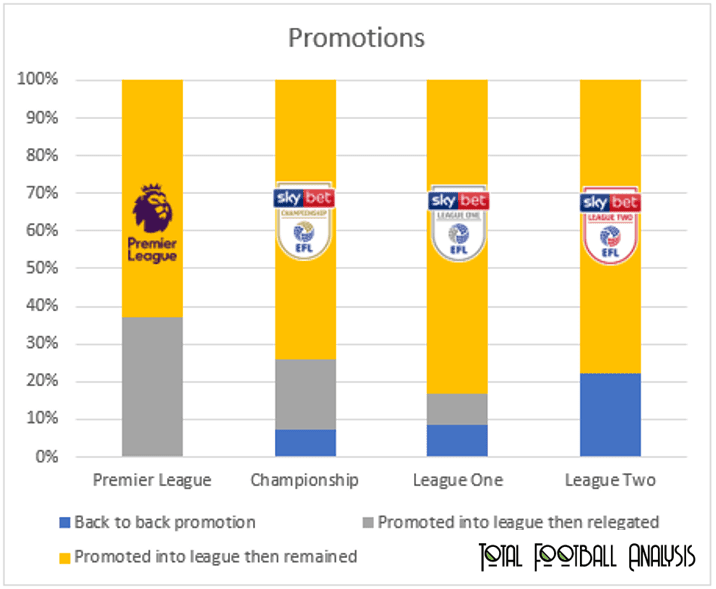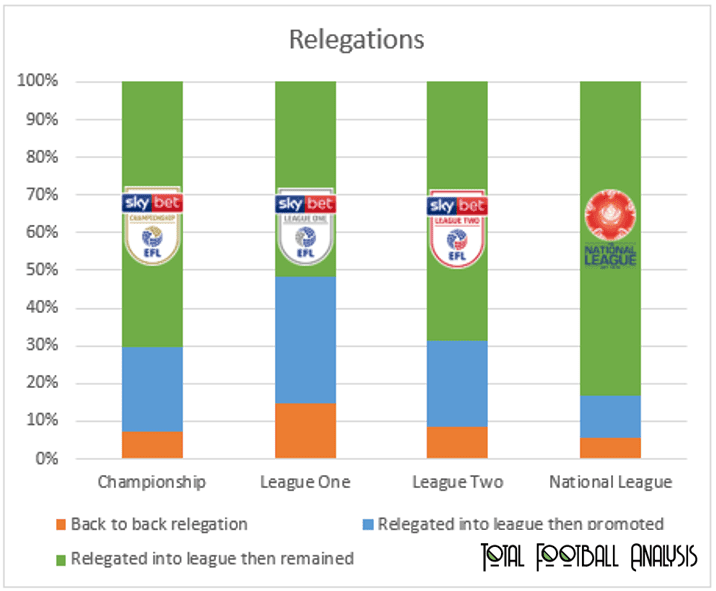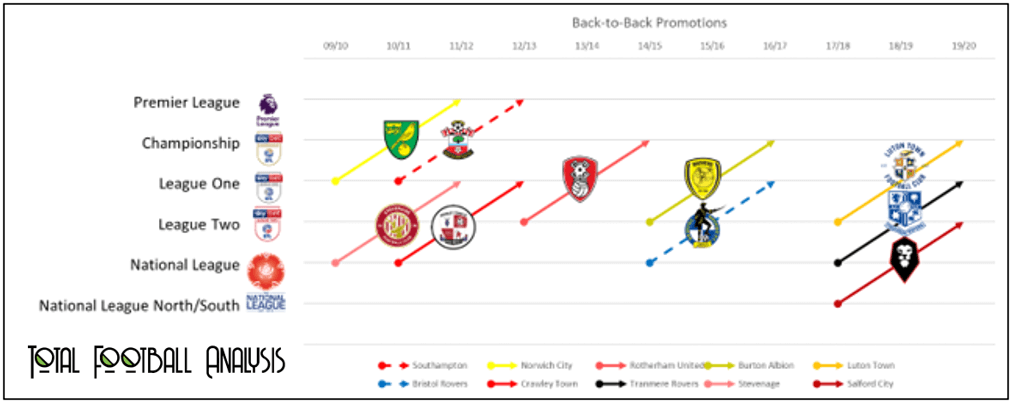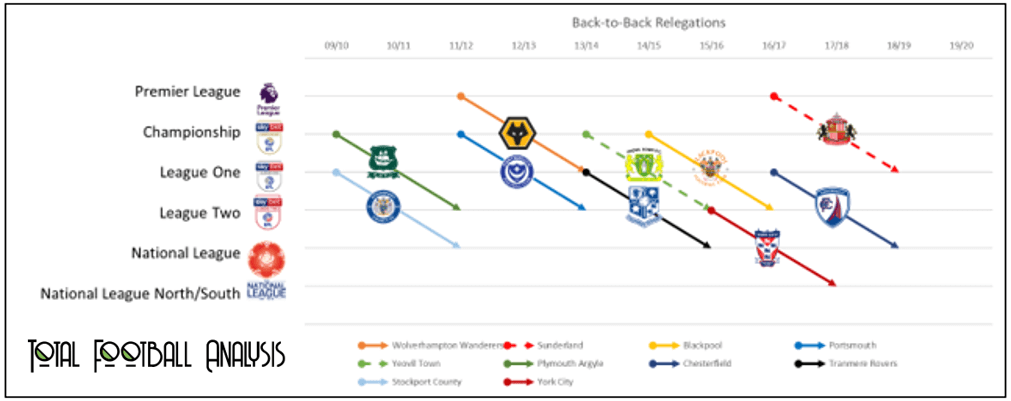With phrases like “bouncing back” and “second season syndrome” commonly used in football, I wanted to know if there was any truth in these old ideas and was intrigued by how newly promoted or relegated teams have fared in their new leagues over the last decade.
By interrogating the data between the 2009/10 and 2018/19 seasons; from the Premier League, down to and including the National League, I unearthed some fascinating insights.
Promoted Teams

Most teams have enjoyed immediate success after being promoted, with 75% of teams surviving in the league and a further 5.7% actually achieving back to back promotions. On average, newly promoted teams survive for 3 seasons before getting relegated.
Interestingly, no team promoted from the Conference into League Two in the last 10 years has been relegated in their first season, which makes that transition to Football League status even more lucrative in the long term for teams vying to take the step up from Non-League.
However, the graph above highlights that surviving that crucial first season becomes harder as you move up the league pyramid. For example, the Premier League sees over a third of newly promoted teams get relegated again straight away.
Relegated Teams

Unfortunately, for teams which endure the ignominy of relegation, it is rare to bounce back instantly. Only about 20% of teams get promoted in their first season, whilst it takes on average 2.5 seasons to get promoted again after relegation. Therefore, fans should consider tapering their expectations should they drop down into lower leagues.
In fact, 6.2% of teams experience humiliating back-to-back relegations which I’m sure would be unthinkable for clubs like Sunderland, who suffered this fate in 2018.
Below is a visualisation to illustrate teams that have experienced back-to-back promotions or relegations, with Tranmere having a roller coaster ride and featuring in both.


Summary
The conclusion drawn from the above analysis suggests that the gulf between the Premier League and the rest of the leagues is vast, with a lot of interchanging throughout the lower leagues, particularly between the Championship and League Two with teams struggling to make the jump out of the Championship and into the Premier League, with most normally returning back down after 1 or 2 seasons.
However, notable so-called smaller teams in recent history, including Stoke and Bournemouth, have proven that success is feasible if they can make that jump and establish themselves in the top division. Although both Championship teams now, their extended periods in the Premier League have given other similarly ambitious clubs a blueprint to strive towards.
As with all professional sport, the margins between success and failure can be small and many teams (Leeds, Charlton and Portsmouth all spring to mind) have struggled once dropping down from the promised land of the Premier League.
The above writing has proven how difficult it is to climb through the English Football League system in recent years, with it becoming increasingly difficult for teams to “bounce back” after relegation. However, it is obvious to see that if a team can gain momentum in the right direction and prove to be an exception to the trends, the rewards are massive.






Comments